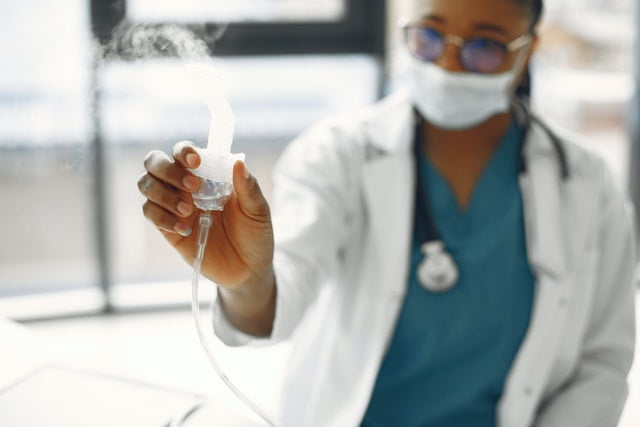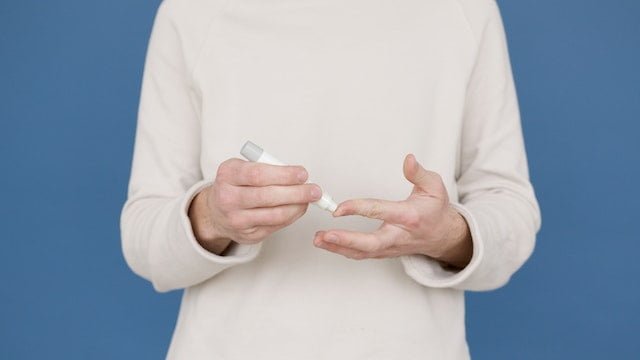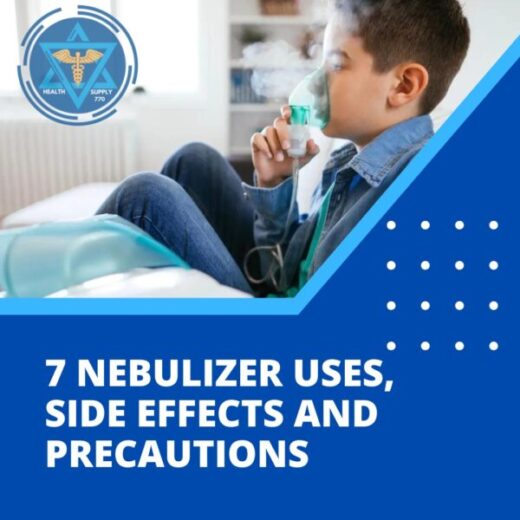With increasing lung disorders owing to multiple causes, breathing difficulties are commonly endured by patients these days. Although breathing exercises, along with medications, can help solve the problem, the employment of medical care, such as the use of nebulizers, becomes a necessity in some cases. A nebulizer is a machine used to inhale steam incorporated with or without medicated solutions to assist breathing.
The solution, upon inhalation, gets converted into a mist or aerosol with droplet sizes 1 to 5 µm, the ideal dimensions required in order to diffuse deep into the lungs. Drugs such as bronchodilators as well as mucolytic agents can be added into the nebulizers to dilate the respiratory pathway along with decreased mucus thus easing the oxygen flow.
Components of a nebulizer
A nebulizer uses an assembly of the following parts:
- Compressor: A compressor is used to create the mist or aerosol of water which is to be used independently or along with the medication.
- Tubing: It is a plastic tube used to connect the nebulizer to the compressor in order to deliver the mist.
- Nebulizer cup: A nebulizer cup is used to hold the medication which is intended to be delivered to the lungs.
- Dome: It delivers the mist mixed with the added drug to the mouthpiece.
- Mouthpiece: It is to be put into the oral cavity for inhalation.
Exploring nebulizer uses

a Healthcare Professional Holding a Nebulizer
Although the nebulizers have numerous applications, here are the 7 most common conditions where these are employed:
Lung infections
Certain infections of the respiratory tract, when treated with antibiotics, remain partially or, in the worst cases, completely unaffected. This is due to the drug resistance developed in the patients after the long-term use of antibacterial medications. In such cases, the drugs alone fail to produce the desired effect thus needing a boost to enhance their penetration into the deeper segments of the respiratory tract. The use of nebulizers is one of the options in such conditions.
Asthma
Asthma is an allergic reaction of the bronchi which results in the tightening of the lumen of the respiratory pathway along with increased mucus secretions. All these changes add up to cause mild to severe difficulty in breathing. The patients, in such cases, require inhalers containing bronchodilating drugs such as salbutamol or terbutaline to reverse the condition back to normal. Although, in case of a severe asthmatic attack, the patient needs to be nebulized to provide primary care by facilitating breathing.
Cystic fibrosis
Cystic fibrosis is a genetic abnormality in which the patient experiences severe congestion in the lungs due to the excessive generation of mucus by the bronchial mucosa. Different drugs such as N-acetylcysteine are thus administered via nebulizers to reduce the viscosity of the mucus thus making space for the air to pass in and out. Additionally, the administration of hypertonic salt solutions is also feasible due to their mucolytic effects.
Chronic obstructive pulmonary disease
Chronic obstructive pulmonary disease, abbreviated as COPD, damages the bronchial tubes as well as the alveoli, the areas responsible for gaseous exchange. Moreover, the increased mucus levels add up to breathing issues. Studies have reported the effectiveness of nebulized furosemide, fentanyl citrate as well as morphine to relieve the condition.
Lung injuries
In case of accidents where lungs get damaged, internal bleeding may occur leading to elevated blood coagulation in the body thus increasing the chances of thromboembolism i.e. formation of attached or freely moving blood clots in the body. Anticoagulants such as heparin, given via nebulization, can reduce the chances of blood coagulation.
Lung cancer
Lung cancer, especially in its advanced stages, usually renders it hard for the patient to breathe properly. In these subjects, breathing difficulties, along with pain, thus become common. To relieve this condition, morphine can be administered directly to the lungs using a nebulizer.
Insulin administration
Patients with type 1 diabetes have to take insulin before every meal to prepare the body for the burst of glucose. This method, although efficacious, is invasive in nature i.e. the patients frequently develop infections at the site where they inject insulin. Thus, the search for non-invasive methods to administer insulin has been the priority. Recent studies have shown the employment of nebulizers to deliver insulin has been proven to be effective and is in the process of getting approval from the FDA i.e. the Food and Drug Administration.

Diabetic Person Using A Pen Insulin Self Injection
Side effects of using a nebulizer
Although the use of nebulizers is generally considered safe, some of the following side effects may be experienced by the patients:
- The temperature of the nebulizing solution can put pressure on the air passageway upon inhalation resulting in a feeling of chest tightness.
- The nebulizing solution can cause eye irritation in case of contact due to improper use of a face mask.
Precautions to use a nebulizer
The following precautionary measures must be taken to ensure the proper use of nebulizers:
- Nebulizers must be thoroughly cleaned with hot water and soap followed by drying after every use to eliminate the chances of bacterial buildup i.e. aureus and P. aeroginosa can multiply and get inhaled upon next use.
- Disinfection of the components of the nebulizer must be practiced twice a week. For this purpose, 70% IPA (isopropyl alcohol), 3% hydrogen peroxide, or an aqueous solution of vinegar (1:3) should be used.
Conclusion
The use of nebulizers to facilitate the breathing process in patients with lung disorders is a common as well as an effective practice in therapeutics. The method is inexpensive and easy to conduct as it does not require the assistance of a nurse or medical technician. Thus, the nebulizer treatment provides maximum advantage with minimum difficulty rendering it a method of choice for patients with breathing difficulties.

PhD Scholar (Pharmaceutics), MPhil (Pharmaceutics), Pharm D, B. Sc.
Uzma Zafar is a dedicated and highly motivated pharmaceutical professional currently pursuing her PhD in Pharmaceutics at the Punjab University College of Pharmacy, University of the Punjab. With a comprehensive academic and research background, Uzma has consistently excelled in her studies, securing first division throughout her educational journey.
Uzma’s passion for the pharmaceutical field is evident from her active engagement during her Doctor of Pharmacy (Pharm.D) program, where she not only mastered industrial techniques and clinical case studies but also delved into marketing strategies and management skills.
Throughout her career, Uzma has actively contributed to the pharmaceutical sciences, with specific research on suspension formulation and Hepatitis C risk factors and side effects. Additionally, Uzma has lent her expertise to review and fact-check articles for the Health Supply 770 blog, ensuring the accuracy and reliability of the information presented.
As she continues her PhD, expected to complete in 2025, Uzma is eager to contribute further to the field by combining her deep knowledge of pharmaceutics with real-world applications to meet global professional standards and challenges.








